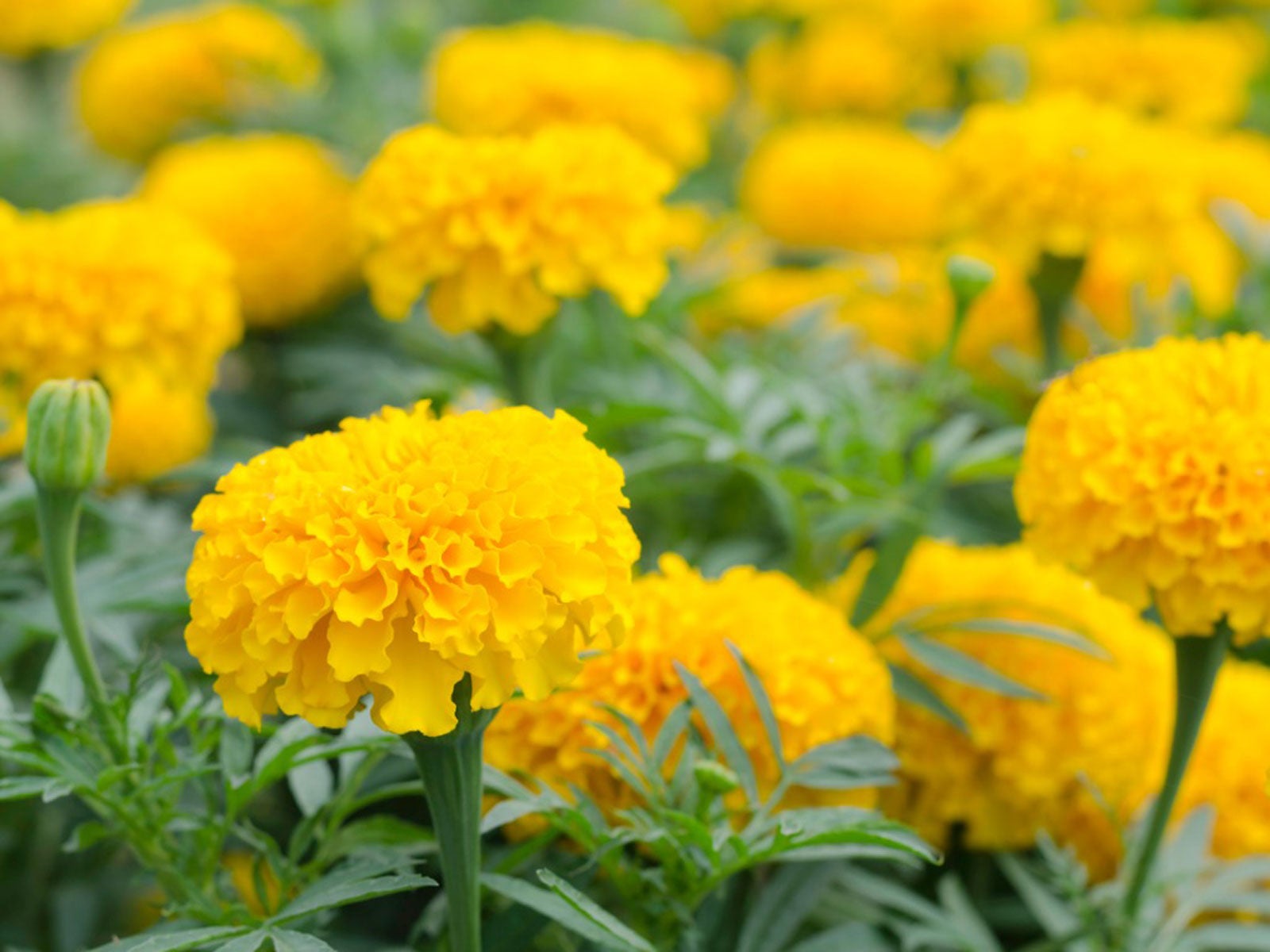Marigold Flower Uses: Marigold Benefits For Gardens And Beyond


Marigolds are native to Mexico, but the sunny annuals have become incredibly popular and are grown in countries around the world. Although they are appreciated primarily for their beauty, you may not have considered the many surprising marigold benefits for gardens. Read on to learn about ways to use marigold plants in the garden.
Marigold Uses and Benefits
Check out the following marigold flower uses, and a few important marigold benefits for gardens.
- Nematode control – The roots and stems of marigolds emit a chemical that may suppress the population of root-knot nematodes, tiny soilborne worms that feed on the roots of ornamental plants and vegetables. It appears that French marigolds, particularly the ‘Tangerine’ variety, are most effective against the destructive pests.
- Bees and other beneficial insects – Marigolds attract ladybugs, parasitic wasps, hoverflies, and other beneficial insects that protect your plants from aphids and other harmful pests. The blooms, particularly single-bloom cultivars, also draw bees and other important pollinators.
- Adding variety to the landscape – Marigolds are available in sunny shades of orange, yellow, red, mahogany, or combinations. Flowers may be single or double, and in sizes ranging from 6 inches (15 cm.) to 3 feet (1 m.). One of the many uses for marigolds is adding variety to the landscape.
- Easy, breezy marigolds – Caring for marigolds couldn’t get much easier. The hardy plants tolerate sun, heat, drought, and nearly any well-drained soil. Marigolds are easy to grow from transplants, or you can start seeds indoors or directly in your garden.
- Marigold companion planting – When planted nearby, marigolds may protect cruciferous plants from cabbageworms, and tomato plants from hornworms, probably because scent confuses the pests. Marigold is also a good companion when planted near bush beans, squash, cucumbers, and eggplant.
Marigolds vs. Calendula: What’s the Difference?
Calendula (Calendula officinalis) is commonly known as English marigold, Scotch marigold, or pot marigold, particularly in Europe. In spite of the familiar nicknames, calendula is a different plant from the common marigold (Tagetes spp.). However, both are members of the Asteracea family, which includes chrysanthemums and daisies.
You may read valuable information about the medical or culinary uses of calendula or marigold. Before you consider uses for marigolds, however, take steps to learn the difference between the two. Certain parts of the calendula plant are edible, while most marigolds (with exception to specific hybrids) are toxic for humans and animals.
Sign up for the Gardening Know How newsletter today and receive a free copy of our e-book "How to Grow Delicious Tomatoes".

A Credentialed Garden Writer, Mary H. Dyer was with Gardening Know How in the very beginning, publishing articles as early as 2007.